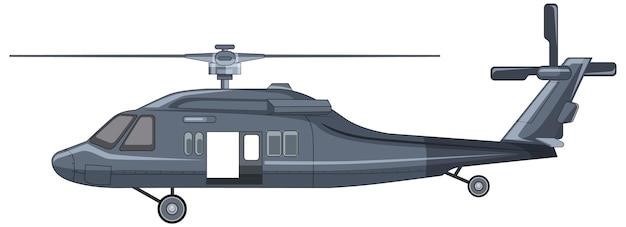Russian Military Helicopters in 2024
This article examines the state of Russian military helicopters in 2024‚ focusing on their types‚ key players in their production‚ their performance in the Ukraine war‚ and future prospects․

Introduction
Russian military helicopters play a crucial role in the country’s armed forces‚ providing a wide range of capabilities from attack and transport to reconnaissance and utility missions․ As of 2024‚ Russia boasts a substantial helicopter fleet‚ encompassing various models designed and manufactured by domestic companies․ However‚ the ongoing conflict in Ukraine has significantly impacted the Russian military’s helicopter capabilities; This article delves into the current state of Russian military helicopters‚ examining their types‚ key players in their production‚ their performance in the Ukraine war‚ and future prospects․
Types of Russian Military Helicopters
The Russian military operates a diverse fleet of helicopters‚ categorized into three primary types⁚ attack‚ transport‚ and utility; Attack helicopters‚ like the Ka-52 Alligator and the Mi-28N Night Hunter‚ are designed for close air support‚ anti-armor warfare‚ and engaging enemy aircraft․ Transport helicopters‚ such as the Mi-8/17 Hip and Mi-26 Halo‚ are used to transport troops‚ equipment‚ and supplies․ Utility helicopters‚ including the Mi-24 Hind and Mi-35M‚ perform a variety of tasks‚ including medical evacuation‚ search and rescue‚ and reconnaissance․ These helicopters are equipped with a range of weapons‚ sensors‚ and communication systems‚ reflecting their adaptability to various combat scenarios․
Attack Helicopters
The Russian military’s attack helicopter fleet is a critical component of its combat capabilities․ The mainstay of this fleet is the Ka-52 Alligator‚ a twin-seat‚ all-weather attack helicopter designed for close air support‚ reconnaissance‚ and anti-armor missions․ It boasts advanced avionics‚ a powerful weapons suite including guided missiles and rockets‚ and the ability to operate in challenging weather conditions․ Another key attack helicopter is the Mi-28N Night Hunter‚ equipped with night-vision capabilities and a sophisticated targeting system․ It is designed to operate independently or in conjunction with other aircraft‚ providing a formidable force for attacking enemy ground forces․ These attack helicopters‚ along with other models like the Mi-35M‚ are crucial for the Russian military’s offensive and defensive operations‚ particularly in the context of the ongoing conflict in Ukraine․
Transport Helicopters
The Russian military relies heavily on transport helicopters for troop deployment‚ logistical support‚ and medical evacuation․ The Mi-8/17 series remains a workhorse in this category‚ known for its reliability and versatility․ These helicopters can carry troops‚ equipment‚ and supplies‚ and their large cargo capacity makes them ideal for transporting heavy equipment and personnel․ The Mi-26 Halo is another significant player in the transport helicopter category․ This behemoth is the world’s largest production helicopter‚ capable of carrying up to 20 tons of cargo‚ making it essential for transporting large equipment‚ supplies‚ and personnel over long distances․ The Mi-38‚ a newer addition to the Russian transport helicopter fleet‚ offers advanced capabilities and greater efficiency‚ further bolstering the military’s logistical and deployment capabilities․
Utility Helicopters
Russian military utility helicopters fulfill a wide range of roles beyond combat‚ including search and rescue‚ reconnaissance‚ and aerial surveillance․ The Ka-27‚ a naval helicopter‚ is designed for detecting‚ tracking‚ and engaging underwater and surface targets‚ making it a crucial asset for maritime operations․ The Mi-2 is a small‚ versatile helicopter suitable for a variety of tasks‚ including reconnaissance‚ patrol‚ and training․ The Mi-14‚ a maritime patrol and reconnaissance helicopter‚ is equipped for anti-submarine warfare and surveillance․ These utility helicopters play a vital role in maintaining situational awareness‚ supporting other military operations‚ and ensuring the safety of personnel and equipment․
Key Players in the Russian Helicopter Industry
The Russian helicopter industry is dominated by two key players⁚ JSC Russian Helicopters and Rostec․ JSC Russian Helicopters‚ headquartered in Moscow‚ is a leading helicopter design and manufacturing company․ It designs and manufactures both civilian and military helicopters‚ with a focus on advanced technologies and innovative solutions․ The company’s principal shareholder is Rostec‚ a state corporation responsible for promoting the development‚ production‚ and export of high-tech industrial products for the defense and civilian sectors․ Rostec plays a pivotal role in shaping the Russian helicopter industry‚ providing financial support‚ technical expertise‚ and strategic guidance to JSC Russian Helicopters and other key players in the sector․
JSC Russian Helicopters
JSC Russian Helicopters (Russian⁚ Вертолёты России‚ romanized⁚ Vertolyoty Rossii) is a prominent player in the global helicopter market․ The company‚ headquartered in Moscow‚ boasts a rich history and a strong reputation for designing and manufacturing both civilian and military helicopters․ JSC Russian Helicopters is known for its diverse product portfolio‚ encompassing various types of helicopters‚ including the Mi-8/17‚ Ka-52‚ and Ansat․ The company’s helicopters are in service with numerous countries worldwide‚ contributing to various sectors such as transportation‚ search and rescue‚ and military operations․ JSC Russian Helicopters is committed to continuous innovation and technological advancements‚ focusing on developing next-generation helicopters that meet the evolving needs of its customers․
Rostec
Rostec‚ a Russian state-owned corporation‚ plays a pivotal role in the Russian defense industry‚ including the helicopter sector․ Rostec’s vast portfolio encompasses a wide range of industries‚ including aerospace‚ defense‚ and technology․ Within this framework‚ Rostec oversees the development‚ production‚ and export of military equipment‚ including helicopters․ Rostec’s influence on the Russian helicopter industry is significant‚ as it provides crucial support to JSC Russian Helicopters‚ the primary helicopter manufacturer in Russia․ Rostec’s involvement extends beyond financial backing; it actively participates in research and development initiatives‚ contributing to the advancement of Russian helicopter technology․ Furthermore‚ Rostec facilitates the export of Russian helicopters to international markets‚ playing a key role in promoting the global presence of the Russian helicopter industry․
Russian Military Helicopter Operations in the Ukraine War
The ongoing conflict in Ukraine has highlighted the critical role of Russian military helicopters․ These aircraft have been deployed for various missions‚ including attack‚ transport‚ and reconnaissance․ However‚ the war has also exposed vulnerabilities and challenges faced by Russian helicopter operations․ Reports from the UK Ministry of Defence suggest significant losses of Russian Ka-52 attack helicopters‚ with estimates indicating the destruction or damage of over 60 units․ This loss of aircraft has been attributed to a combination of factors‚ including Ukrainian air defenses‚ drone attacks‚ and the use of anti-tank missiles․ The conflict has also prompted adaptations and countermeasures from both sides․ Russian forces have reportedly employed longer-range missiles to engage ground targets from greater distances‚ reducing their exposure to Ukrainian defenses․ The Ukrainian military‚ meanwhile‚ has adapted drones to defend against Russian helicopter strikes‚ employing heat-seeking missiles to target these aircraft․
Losses and Effectiveness
The Ukraine War has resulted in substantial losses for Russian military helicopters․ Reports from the UK Ministry of Defence indicate that Russia has lost over 40 Ka-52 attack helicopters since the start of the conflict․ Open-source website Oryx visually confirmed the destruction or damage of 61 Ka-52s as of August 2024․ These losses stem from a combination of factors‚ including Ukrainian air defenses‚ drone attacks‚ and the use of anti-tank missiles․ Despite the losses‚ Russian helicopters have played a significant role in the conflict‚ providing vital support to ground forces․ However‚ their effectiveness has been hampered by the sophisticated defenses employed by Ukrainian forces‚ resulting in a significant number of aircraft being lost․ The war has highlighted the vulnerability of Russian helicopters to modern anti-aircraft systems and the need for more robust countermeasures․ The conflict has also raised questions about the long-term sustainability of Russia’s helicopter fleet in the face of such significant losses․
Adaptations and Countermeasures
The Russian military has responded to the losses and challenges posed by the Ukraine war by adapting its tactics and employing countermeasures․ One notable adaptation is the use of longer-range missiles by attack helicopters to engage ground targets from a safe distance․ This tactic aims to reduce the risk of being targeted by Ukrainian air defenses․ Additionally‚ Russian forces have reportedly adapted drones to defend against helicopter strikes‚ using heat-seeking missiles to engage them․ These drones are employed to break through containment booms‚ effectively creating a defensive shield against helicopter attacks․ However‚ the effectiveness of these countermeasures remains to be fully assessed․ The war has highlighted the need for the Russian military to develop more sophisticated countermeasures to protect its helicopters from the evolving threats posed by Ukrainian forces․ The adaptation of tactics and the implementation of countermeasures are crucial for maintaining the operational effectiveness of Russia’s helicopter fleet in the challenging environment of the Ukraine war․
The Future of Russian Military Helicopters
The future of Russian military helicopters is intertwined with the ongoing war in Ukraine‚ the country’s overall military modernization plans‚ and its evolving technological capabilities․ The war has significantly impacted the production capacity of the Russian helicopter industry‚ as the demand for military-spec helicopters has increased significantly both domestically and internationally․ However‚ the war has also highlighted the need for technological advancements in Russian helicopter design‚ particularly in terms of survivability‚ electronic warfare capabilities‚ and the integration of advanced weapons systems․ The Russian military is likely to prioritize the development of new helicopter models that incorporate these advancements to maintain its edge in future conflicts․ The impact of the war on the future of Russian military helicopters will ultimately depend on the duration and intensity of the conflict‚ the availability of resources for research and development‚ and the progress made in overcoming the challenges posed by Western sanctions․
Production Capacity
The production capacity of Russian military helicopters is a critical factor in determining the country’s ability to sustain its military operations․ While Russia has a long history of producing helicopters‚ the ongoing war in Ukraine has placed significant strain on its production capabilities․ The demand for military-spec helicopters has surged‚ both domestically and internationally‚ leading to a backlog in orders and a shortage of raw materials․ The war has also disrupted supply chains and imposed sanctions on Russian industries‚ further hindering production․ Despite these challenges‚ the Russian government has announced plans to increase the production of military helicopters‚ with a focus on modernizing its fleet and bolstering its military capabilities․ However‚ it remains unclear whether the Russian military-industrial complex can meet the demands of the war and sustain its production capacity in the long term․
Technological Advancements
Despite facing significant challenges in production and deployment‚ Russian military helicopters continue to undergo technological advancements․ These developments focus on enhancing their combat capabilities‚ survivability‚ and effectiveness in modern warfare․ Notable advancements include the integration of advanced avionics systems‚ improved targeting and navigation capabilities‚ and the development of new weapons systems․ Russia has also been working on incorporating electronic warfare systems and counter-measure technologies to protect its helicopters from enemy threats․ The ongoing war in Ukraine serves as a testing ground for these technological advancements‚ pushing Russian engineers and designers to adapt and innovate in response to the evolving battlefield․ The future of Russian military helicopters hinges on the success of these technological advancements‚ as they strive to maintain a competitive edge in the global arms race․
Impact of the War
The ongoing war in Ukraine has had a profound impact on Russian military helicopters‚ both in terms of their operational capabilities and future development․ The conflict has highlighted vulnerabilities in Russian helicopter design and tactics‚ particularly their susceptibility to Ukrainian drone attacks and the effectiveness of Western anti-tank weaponry․ The war has also exposed a shortage of spare parts and maintenance resources‚ leading to a decline in the overall operational readiness of Russian helicopter forces․ This has prompted a reassessment of production priorities and a focus on developing counter-measures to address the threats posed by modern warfare․ The war in Ukraine has also spurred a renewed emphasis on developing advanced technologies to improve the survivability and effectiveness of Russian helicopters in future conflicts․ The war’s impact on Russian military helicopters is likely to be felt for years to come‚ shaping both the design and deployment of future generations of these aircraft․

The future of Russian military helicopters is intertwined with the ongoing war in Ukraine‚ the country’s economic constraints‚ and the evolving global security landscape․ While Russia possesses a significant inventory of helicopters‚ the conflict has revealed weaknesses in their design and operational capabilities․ The war has also strained Russia’s production capacity and highlighted the importance of technological advancements to enhance the survivability and effectiveness of its helicopter fleet․ The impact of the war‚ coupled with Western sanctions‚ is likely to shape the trajectory of Russia’s helicopter industry in the coming years‚ potentially leading to a decline in production‚ a shift towards more advanced technologies‚ and a focus on enhancing operational effectiveness in the face of evolving battlefield threats․



